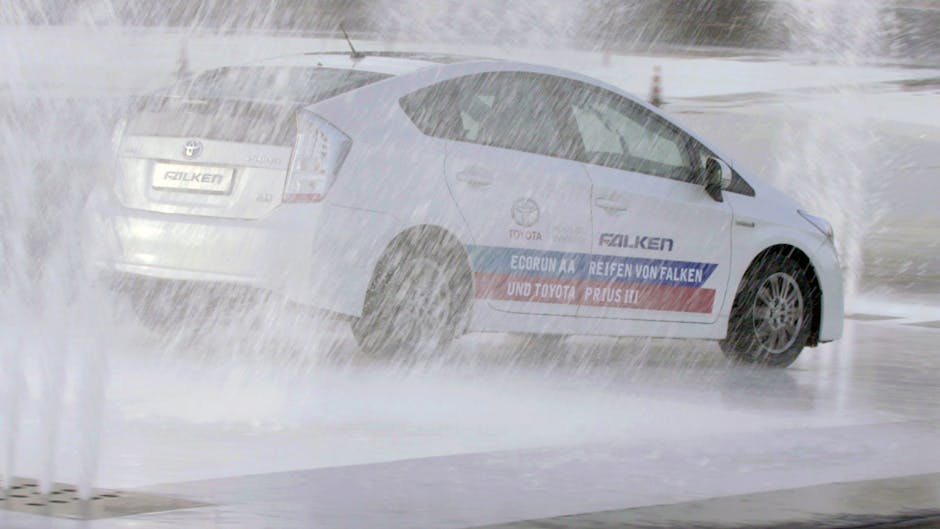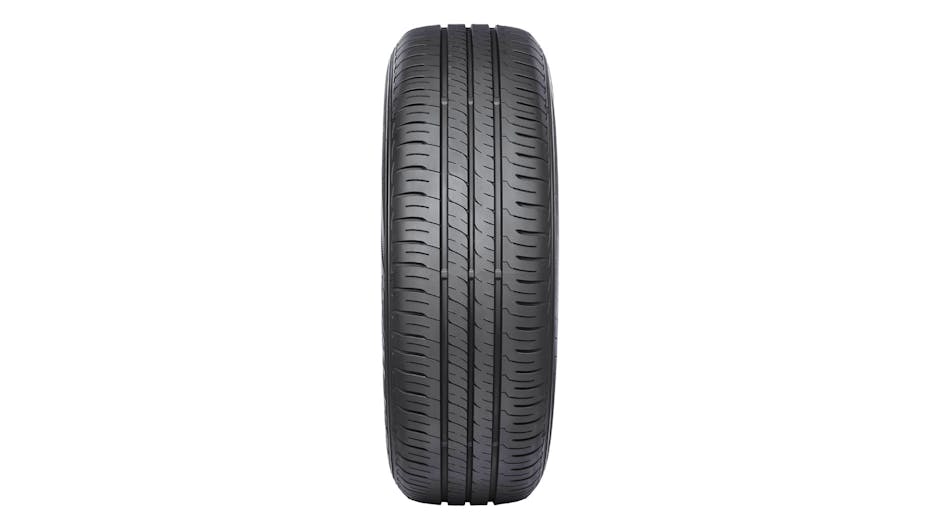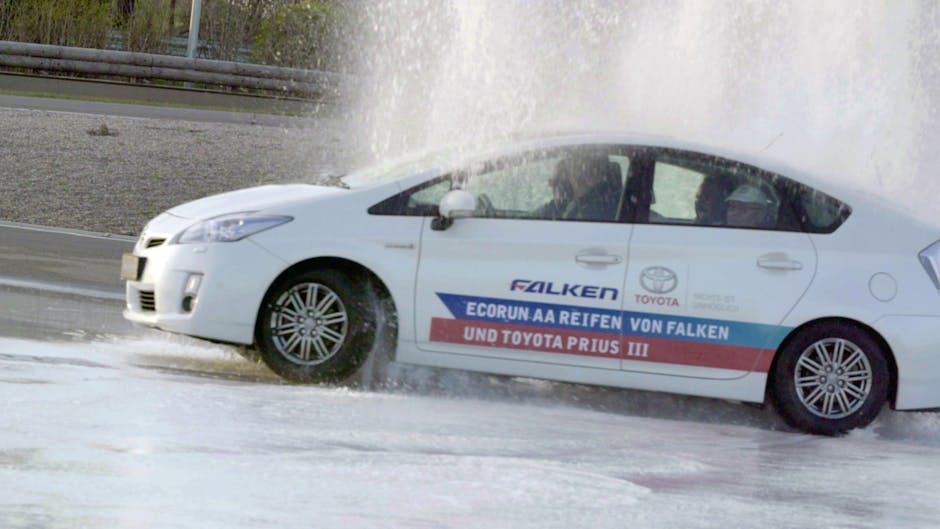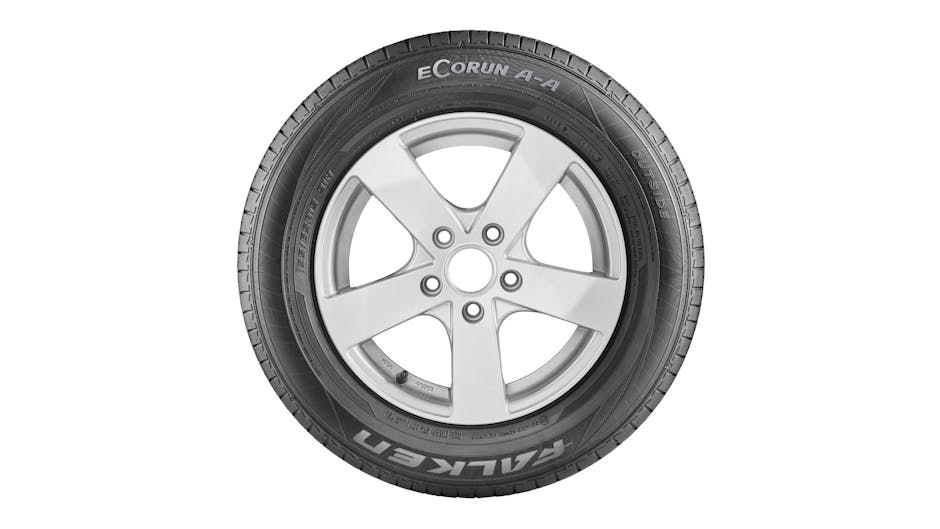The Falken Ecorun A-A is designed with electric cars in mind. We take a look at what makes it different and why electric vehicles have their own special requirements and design challenges that tyre manufacturers need to consider.
To the untrained eye, it may seem like you draw some lines into rubber, cut it into a circle and, bam, you have a new tyre design. The reality is, however, much more complicated.
Everything from the materials and tread pattern design to the compound softness and width all require extensive research to ensure a tyre can cope with a scorching hot day one second, heavy rain the next. In addition to providing safe levels of grip and longevity.
In the case of electric vehicles (EVs), the hurdles are arguably even bigger. Here’s why there is a need for EV-specific tyres and what makes the Falken Ecorun A-A – developed with help from fellow Japanese company Toyota – tyre special.
What are the challenges for an EV tyre?

For starters, electric vehicles are typically much heavier (Falken estimates somewhere between 20 to 30 per cent) than their internal combustion engine counterparts because of the large lithium-ion battery needed to power one or multiple electric motors. This puts greater strain on the tyre at all times.
Then there is the fact that in an electric vehicle the layout of the battery and motor varies from car to car. In the Tesla Model S, you have a motor at the front axle and the same again at the rear, providing even weight distribution. For other cars with one electric motor, this could be different, which is something Falken and other tyre manufacturers have to account for.
EVs also offer very linear torque from as low down as zero revolutions per minute, which is why even the least powerful examples drive with more than adequate enthusiasm (just look at the Renault Twizy). This, of course, means tyres have to be tough enough to survive the potentially higher levels of acceleration.
All of those things are an issue. The real problem, though, is that electric cars typically have a smaller driving range than a petrol or diesel equivalent, which is why reducing rolling resistance is another essential element of an EV tyre.
To do this, you can cut down on the width of a tyre but then you end up with less grip at each corner, which is obviously a bad thing for something used to carry your family around.
How does the Falken Ecorun A-A EV tyre work?

In similar fashion to the Goodyear EfficientGrip Performance tyre, the Falken Ecorun A-A uses a unique design to suit an electric vehicle better. It gets the ‘A-A’ part of its name from being rated ‘A’ for wet grip and ‘A’ for fuel efficiency, yet it is said to be 10 per cent more wear-resistant than a conventional tyre.
Falken also claims its EV tyre has a 25 per cent less rolling resistance coefficient. This is thanks to the use of ‘Ultra Pure Natural Rubber’ (UPNR), which is said to have fewer impurities that would affect its ability to dissipate heat. Heat being something that reduces how long a tyre can last, as a Formula One race shows perfectly.
A 4-rib tread design, meanwhile, helps heat escape quickly and minimise the level of rolling resistance. As for improving grip and wet performance, Falken uses a ‘high silica cap layer’ that basically helps hold the tyre together (improving how long it lasts) and makes it grippier in the wet.
So a little more complicated than guesswork, then?

Very much so. The aforementioned 4-rib tread design was chosen after a lengthy scientific process, which involved looking at the, “molecular structure of the tyre, analysing how the polymers, fillers and coupling agents interact at a sub-nanometre scale’, according to a Falken representative. Then, the K Supercomputer – usually tasked with climate research – was brought in to help simulate how the Ecorun A-A tyre performs.
Overkill much? Perhaps, but it means a better product for you. “Falken’s engineers ran hundreds of simulations to investigate how the length of the silane coupling agent affects the formation of voids within the rubber, a factor that affects wear,” he continued. “By finding the optimum length, it gives the silane agent a greater range of motion to reduce the amount of stress when the rubber deforms.”
Thanks to that silane coupling agent, the Falken Ecorun A-A is said to be 50 per cent better than a normal tyre when it comes to wear resistance. That is good news for motorists, who would have to shell out on fewer tyres in their lifetime, but potentially bad for Falken who would end up selling fewer of them.
Can I buy the Falken Ecorun A-A tyre?

Sadly for EV owners, the Falken Ecorun A-A was merely a glorified science project. So no, you will have to wait before tripping to Halfords to give your Hyundai Ioniq, Nissan Leaf or Renault Zoe a new set of rubbers. Only a small batch exists, which you can buy via Toyota Germany.
But Falken was keen to point out that elements of the tyre will trickle into other products.
“The complexity of producing such an advanced tyre means that at present it remains a small scale pilot project but the lessons learned, such as the silane coupling agent, are being adopted across new tyres Falken is producing,” the representative concluded.
Leave a Reply